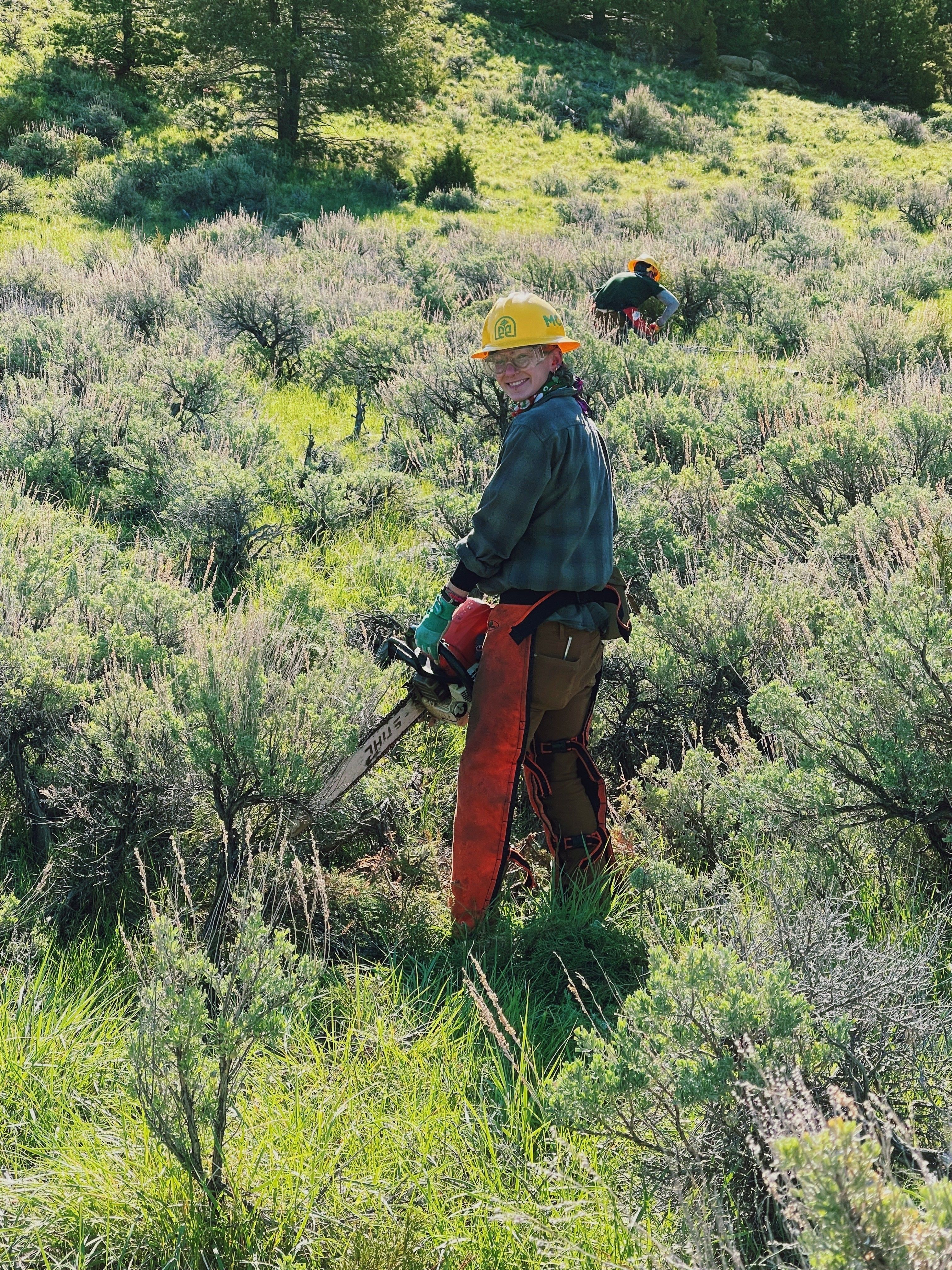
It is just another day in paradise!
Reporting live from Meeteetse, Wyoming, the Montana Conservation Corps Women's Fuel and Fire crew is clearing juniper saplings and slashing out of the riparian areas up the bench and through the draws of these scenic valleys.
At first glance, Enos creek winds through the middle of the riparian gulch. One may think it is a thin stream, comparable to a drainage ditch after heavy rain. Nevertheless, thanks to the efforts of the Women's Fuel and Fire crew the year prior, returning crew members that are now crew leads, Ash Waters and Molly Gehrke, say the creek is already noticeably lusher. This is the central part of the clearing of Junipers.
Yes, they smell great, but the juniper cypress significantly affects the hydraulic cycles in various environments. Water inflow to an area primarily comes from precipitation, and the reaction to the surrounding soil, plants, and bodies of water depends on the existing foliage throughout.
According to the article "How An Increase or Reduction in Juniper Cover Alters Rangeland Hydrology" posted in the Texas Natural Resources Server, junipers tend to contribute to interception loss of precipitation. There are many studies on the water usage of juniper but what tends to be the most impactful on water inflow is the interception that juniper causes to the understory (sagebrush, bunch grass, and short grass cover.) The interception of rain is the rain caught by the canopy and litter of junipers, which acts as a holding place for the water seldom to touch the soil and after that evaporates. The Texas study shows, "As a result of interception loss via the canopy and litter, only 20.3%, 34.0%, and 53.9% of annual rainfall reaches mineral soil under the canopy of Ashe juniper, redberry juniper, and live oak, respectively. This stark contrast to the 81.9% and 89.2% of annual precipitation that reaches the soil under bunchgrass and shortgrass cover, respectively." (Thurow, Hester.) Though there are many other impacts of juniper overgrowth in rangelands for this specific project, the women of MCC are focused on getting Enos creek a bit lusher.
The project expands over 100 acres of land. The Wyoming Bureau of Land Management proposes implanting beaver dam analogs (BDAs) to increase watershed resilience, raise the water level, and invite beavers to lodge in the scenic canyon. With BDAs, areas become encompassed with water pools that add organic matter retention and aquatic plant biomass. If beavers were to occupy the area, they would nurture and invite more biodiversity in ecosystems and agricultural lands. Additionally, the conversion of the vacant creek to the occupation of beavers would employ them to take down additional junipers so the women can work on new fuel mitigation projects.
It is satisfying to see the clearing of the canyon once sprinkled throughout with junipers to be distinguished sage benches that allow the maximization of the minimal precipitation Wyoming offers each season. The Women's Fuels and Fire crew has spent 20 hours working on this project, and tomorrow head back out to revisit the land and dedicate 70 more hours of juniper clearing efforts.
Visit the afformentioned article below to learn more about juniper and hydrology:
Thurow, Thomas L, and Justin W Hester. "How an Increase or Reduction in Juniper Cover Alters Rangeland Hydrology." Texas Natural Resources Server, https://texnat.tamu.edu/library/symposia/juniper-ecology-and-management/how-an-increase-or-reduction-in-juniper-cover-alters-rangeland-hydrology/.

![[Image Description: Four MCC members wade across a river. In the background, there are hillsides covered in gold from the quaking aspens, and deep green pine trees.]](https://cdn.firespring.com/images/bc3da824-0c18-4b37-a2dd-27ae52872fd1.jpg)



